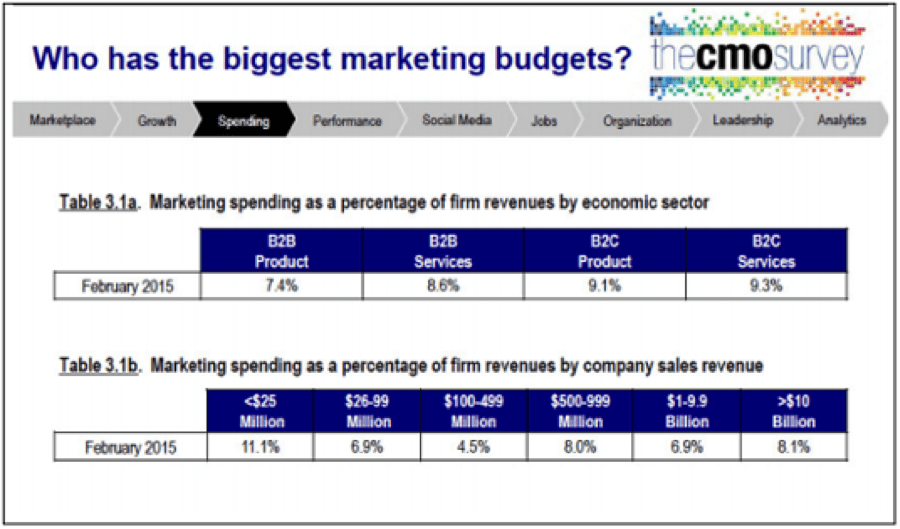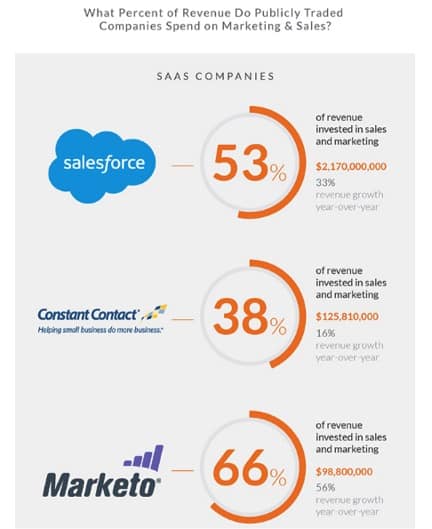How Much Should Companies Invest In Their Marketing Spend?

“Business has only two functions – marketing and innovation,” said writer Milan Cundera.
We spend an immense amount of time and energy on the latter while hesitating to spend money on the former. Meanwhile study after study proves that marketing leads to a larger ROI and a stronger long-term business strategy.
Companies shouldn’t be afraid to invest in their marketing spend or marketing budget.
From marketing to a new product launch, rebranding effort, or goods and services in general, the real question is what type of investment best suits your company’s marketing efforts.
What Is Your Overall Marketing Spend?
Marketing spend refers to the amount of money allocated to the various areas of marketing.
CMO Council reports that more than one-third of chief marketing officers believe digital marketing will account for at least 75 percent of their spending within five years.
Forrester’s U.S. Digital Marketing Forecast supports this finding and predicts that by 2019:
“Marketing leaders will spend more than $103 billion on search marketing, display advertising, social media marketing, and email marketing.”
Strong marketing budgets account for all parts of a comprehensive marketing strategy, including:
-
- content marketing;
- SEO;
- email marketing;
- and social media marketing.
Without this big picture view, companies are operating blind and are less likely to see ROI.
“People will work on corporate identity, but not plan for the budget to implement it. Build the car, but not have enough money to put gas in the engine. While it’s essential to have an initial budget for developing your logo, website and marketing materials, it’s also crucial that you have an ongoing plan for how you are going to get the word out and a budget for putting your plan into action. The best way to do this is to create a marketing strategy and setting a monthly or yearly marketing budget to make sure it happens.” — Empire Creative Marketing
Companies that pay attention, however, see the immediate advantage of going digital.
In 2015, 28 percent of marketing professionals reduced their advertising budgets to invest more digital marketing. Why? Content marketing alone generates 3 times the revenue of traditional outbound marketing, with 62% less cost to your budget.
It’s no wonder an average of 60 percent of a marketer’s time is spent on digital marketing activities.

So, What’s the Magic Number?
Among marketing departments, the saying goes that the “magic number” in terms of a marketing budget is around 10 percent of your revenue.
But as we all know, there are always exceptions. A Duke University study, for example, found an 11 percent marketing spend produced a greater ROI and a 2.5 percent revenue increase.
On the other hand, if you’re a startup launching the next tech craze (i.e., iPad), even 20 percent might not be enough.
For established brands like Pepsi or Fortune 500 companies, total digital marketing costs could fall under 5 percent of revenue.

This CMO Survey tallied the marketing spends as a percentage of firm revenue, both by economic sector and by company sales revenue. The economic sectors included B2B product, B2B services, B2C product and B2C services. These percentages increased since the 2013 CMO survey.
Hey, Big Spender
Software-as-a-Service (SaaS) companies in marketing and sales management industries spend quite a bit more on their own marketing budgets. For instance, Salesforce dedicates more than half of their revenue into sales and marketing – 53 percent!
Similarly, Constant Contact, an email marketing company, spent 38 percent of their roughly $331 million revenue in 2014, resulting in a 16 percent growth over the following year. This growth continues in companies with a higher marketing spend.
 Tableau, one of the fastest growing providers of business analytics software, expects their “sales and marketing expenses to be our largest category of operating expenses as we continue to expand our business.”
Tableau, one of the fastest growing providers of business analytics software, expects their “sales and marketing expenses to be our largest category of operating expenses as we continue to expand our business.”
Like Salesforce, Tableau also spends 53 percent of their revenue on sales and marketing.
However, these percentages aren’t an exact recipe for success. It takes careful thought and planning to determine how much money you should invest in marketing.
Don’t need to, or can’t, spend 53 percent of your annual revenue on marketing alone?
For small businesses, a 10 percent marketing spend stands as an accepted benchmark. If 10 percent remains too high, try 5 percent and use your ROI as a bench-marking tool.
Keep in mind the more you invest in marketing, the higher your chances of a larger ROI. Brands must keep in mind their business level and recognition.
Also, newly-emerging brands might spend a different percentage on marketing while getting on their feet, whereas a well-established brand might spend less since they’ve been in the game much longer.
“When someone asks you, ‘is your marketing working,’ what do you think they’re really asking? Are they asking if it’s generating awareness, generating foot traffic, or generating sales? When I ask this question, I want to know if your marketing is effectively generating business in a profitable way. That’s really what marketing is trying to accomplish, after all. Anyone responsible for spending money to generate revenue (e.g. marketers) should have a simple way to know if their activity is generating business.” — Chris Leone, WebStrategies
Conclusion
Today, companies are spending quite a bit on marketing communications. Global spending on media is expected to reach $2.1 trillion in 2019, and that’s up from $1.6 trillion in 2014. But what these companies have to be concerned about is whether all that money is being well spent?.
All aspects of marketing, including content and social media, are more important than ever and are showing no signs of slowing down. Companies shouldn’t be afraid to invest in their own marketing strategies, in the right ways.
Marketing should not be considered as an expense driver but a profit driver. If you want to stay afloat, a 5% budget might be adequate.
However if you want to grow, invest at least 10% of your revenue.








